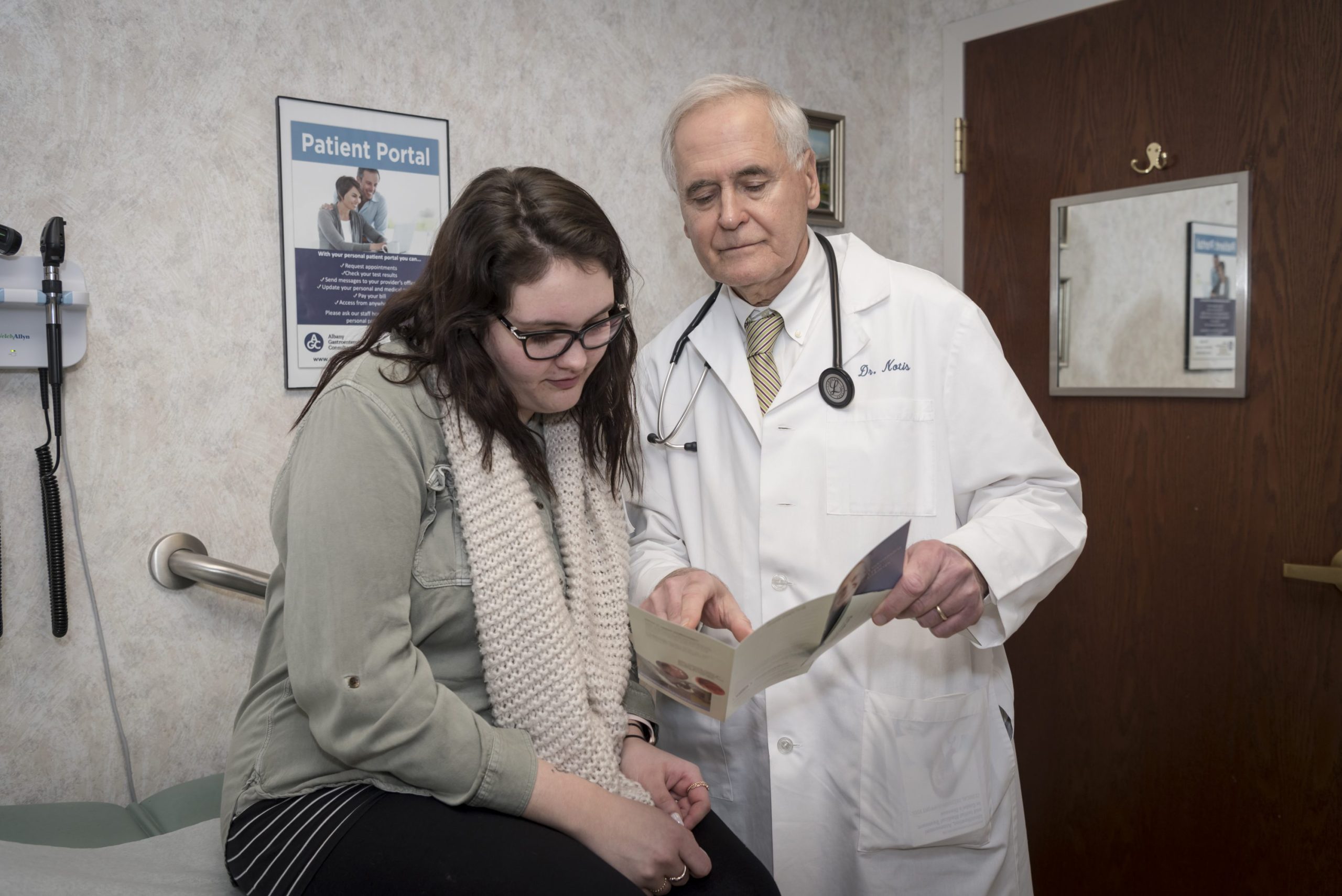Patient Education
We want to help you make the best decisions for your health, so we developed educational resources for a variety of digestive conditions, treatment options, and nutrition plans.
Anal Fissure, Abscess and Fistula
The intestinal tract (or bowel) ends with the rectum. The last part of the rectum is a section about 1 1/2 inches long, known as the anal canal. It ends...
Read MoreAutoimmune Hepatitis
The liver is the largest organ in the body. It is found high in the right upper abdomen, behind the ribs. It is a very complex organ and has many...
Read MoreBarrett’s Esophagus
Heartburn is a burning sensation felt behind the breastbone and sometimes in the neck and throat. It is caused by stomach acid refluxing or splashing up into the esophagus —...
Read MoreCeliac Disease
Celiac Disease (CD) is a disease of the lining of the small intestine. This part of the bowel lies between the stomach and colon or large bowel. It is about...
Read MoreClear Liquid Diet
A diet of clear liquids maintains vital body fluids, salts, and minerals; and also gives some energy for patients when normal food intake must be interrupted. Clear liquids are easily...
Read MoreColon Gas & Flatus Prevention
The thriving healthy mix of bacteria within the colon does not happen without the production of some gases. Most of these gases are odorless – hydrogen, oxygen, carbon dioxide and...
Read MoreColon Polyps and Cancer
Cancer of the colon is a major health problem in the United States. It ranks as a leading form of cancer, along with lung and breast cancer. Importantly, colon cancer...
Read MoreConstipation
Constipation can be defined as infrequent or hard pellet stools, or difficulty in evacuating stool. Passing one or more soft, bulky stools every day is a desirable goal. While troublesome,...
Read MoreCrohn’s Disease
Crohn’s disease is a chronic, recurrent inflammatory disease of the intestinal tract. The intestinal tract has four major parts: the esophagus, or food tube; the stomach, where food is churned...
Read MorePrep Instructions

See how to prepare for your procedure and download detailed instructions.
All Procedures
- Capsule Endoscopy
- Colonoscopy
- Endoscopic Mucosal Resection
- Endoscopic Submucosal Dissection
- Endoscopic Ultrasound
- ERCP
- Esophageal Manometry
- Flexible Sigmoidoscopy
- Fibroscan
- Infusion Therapy
- Liver Biopsy
- Percutaneous Endoscopic Gastrostomy
- Peroral Endoscopic Myotomy
- Upper GI Endoscopy
- Upper GI Endoscopy /w Bravo
